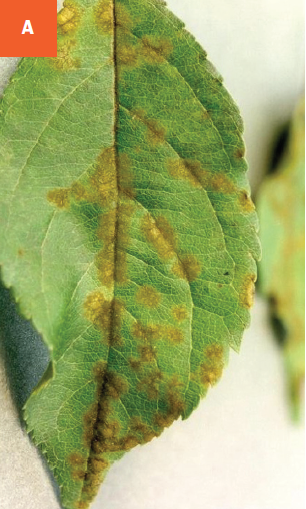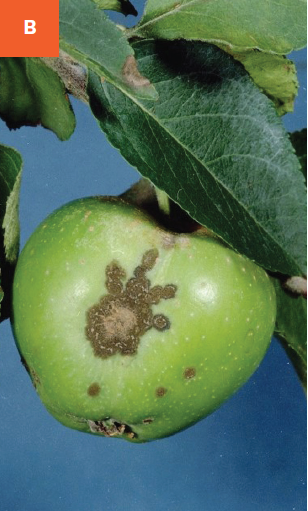Apple Scab
Venturia inaequalis (fungus)
HOST Apple and crabapple trees
DAMAGE/SYMPTOMS Round, olive-green leaf spots with fringed borders appear on leaves in late spring. Spots on fruits can also appear. Leaf spots turn brown to black with age. Affected leaves turn yellow and may drop mid-summer. Infected fruits develop corky tissue and may become deformed and cracked.
DISEASE CYCLE The apple scab fungus overwinters in infected leaf debris on the ground. In spring, spores are produced on the leaf debris and dispersed by wind and rain and infect new leaves. Infection is most severe under wet conditions. Secondary infections occur throughout the growing season when spores are produced on the newly developed leaf spots which infect adjacent leaves. The secondary infections are more severe under warm and moist conditions.
MANAGEMENT Plant apple scab-resistant cultivars whenever possible. The key to controlling apple scab is to prevent the primary infection in spring. Remove fallen, infected leaves to reduce the level of inoculum. Avoid wetting the foliage for prolonged times during the growing season. Prune trees to optimize air circulation. Fruit trees can be treated with fungicides in seven- to ten-day intervals starting from green tip stage until flower petal fall. Products with the active ingredients chlorothalonil, copper, or lime-sulfur are effective in controlling this disease. Strictly follow instructions on the pesticide labels.
A Apple scab lesions on apple leaf. B Apple scab lesions on apple fruit. C Apple scab lesions and cracks expanding on apple fruits.



